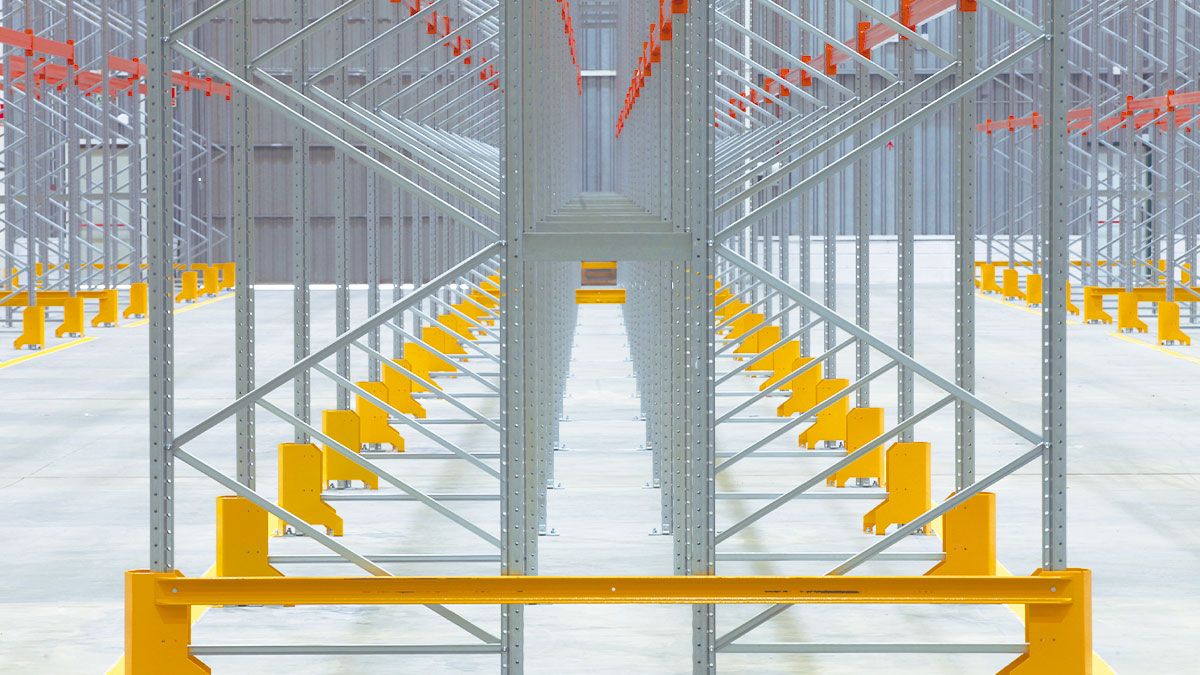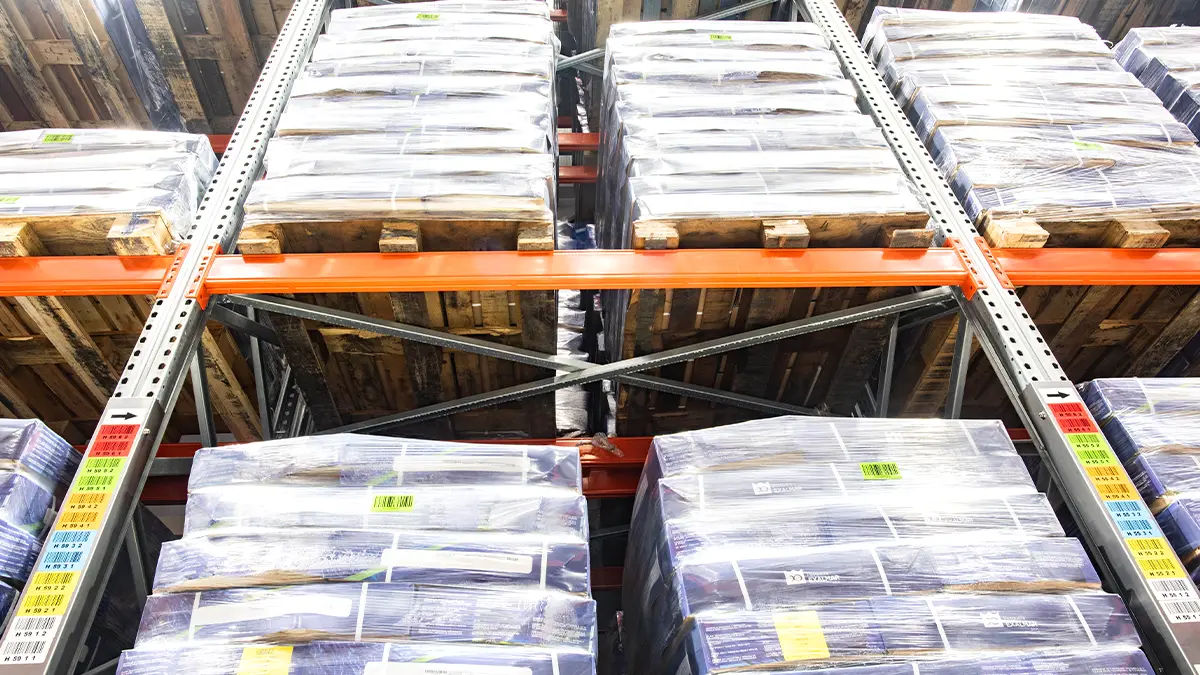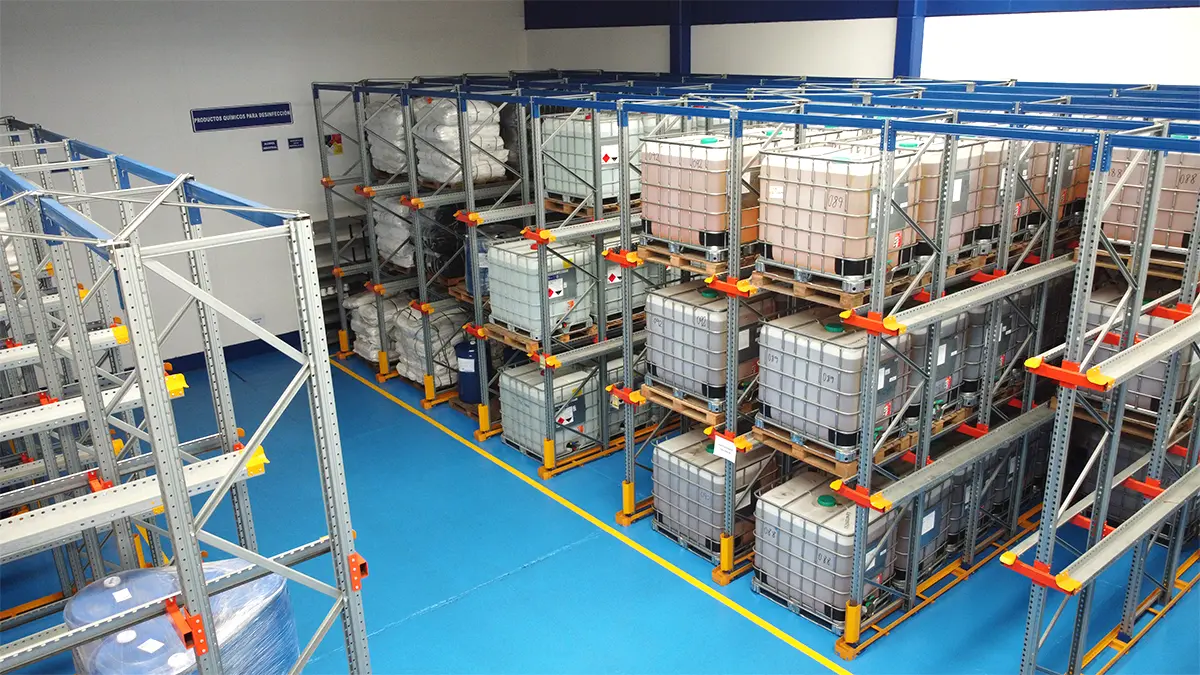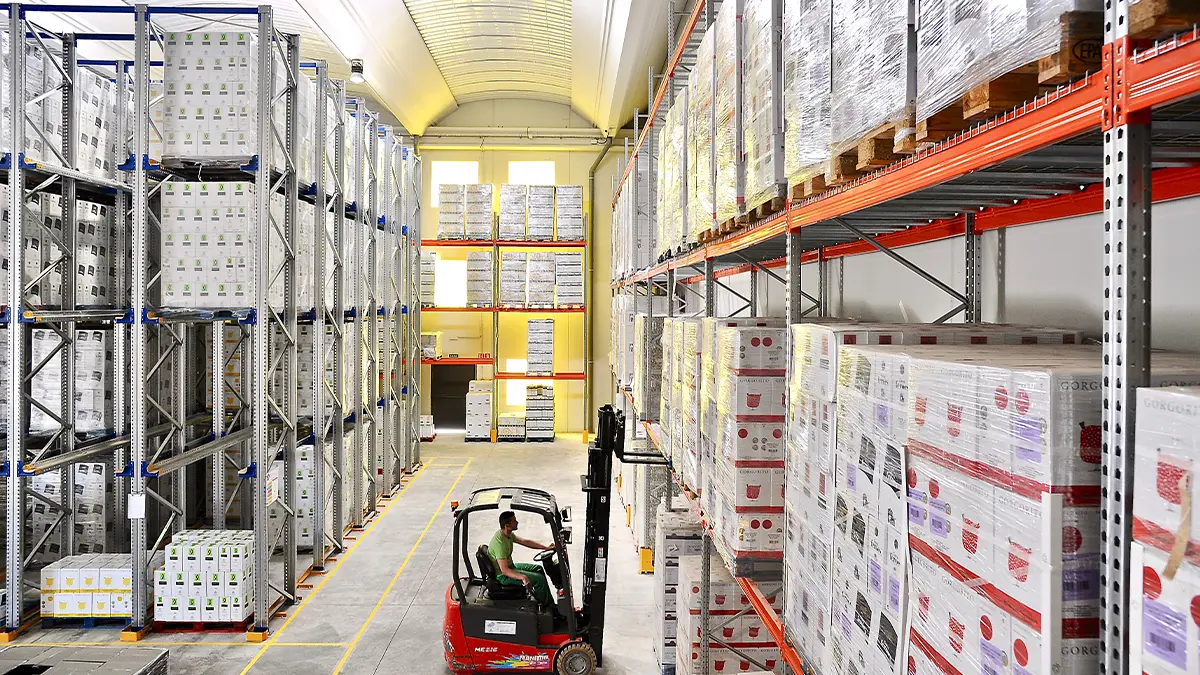In the world of logistics and warehousing, industrial racking is an essential solution for organising and maximising storage space in diverse environments, from warehouses to distribution centres and retail stores. One of the key components of industrial racking is the frame, which plays a crucial role in its structure and functionality. In this article, we will explore what an industrial racking frame is and its importance in efficient storage.
What is an Industrial Racking Frame?
An industrial racking frame is the backbone of the storage structure. It is a vertical structure that consists of vertical uprights and diagonal profiles that connect to form a strong and rigid frame. These frames are manufactured with rolled steel, which provides them with great durability and the ability to withstand heavy loads.
AR Racking manufactures at its fully automated centre an extensive range of frames with a galvanised finish giving them greater durability and resistance to adverse conditions compared to the painted finish.

Functionality of the Industrial Racking Frame:
The basic function of the frame, as the main structural element of industrial racking, is to give the structure stability. But its functionalities go much further; we detail the full scope of this component below:
Structure support and stability
The main purpose of a racking frame is to provide robust support for racking units and the loads stored on them. Depending on the type of industrial racking, the frames may be designed to support different load levels, ensuring equal distribution of the weight across the system.
Distribution of the weight of the load
The frames allow the uniform distribution of the weight of the goods stored on the racking, thus avoiding excessive stress points and guaranteeing the stability and safety of the storage system. The frames will vary significantly if the loads are heavy like pallets or light like cartons.
Configuration of heights
The frames also determine the total height of the racking. In industrial racking systems, the frames can be modular, making it possible to adjust the height of the racks according to the specific storage needs.
Flexibility and Customisation
Industrial racking frames are highly customisable and can be configured to each company’s storage requirements. This facilitates the adaptation of racking to different types of products and packaging sizes.
Organisation and movement in the warehouse
Frames also play an important role in aisle layout and ease of access to stored goods. Suitable frame configuration can optimise the flow of movement within the warehouse, improving order preparation efficiency and reducing delivery times. In this publication we outlined in detail the keys for the correct organisation of a warehouse.

What components does a frame consist of?
The components that form part of the structure of an industrial racking frame are as follows:
Uprights
They are sometimes also known as pillars or posts. They are the longest and strongest parts of the frame. The uprights are the main part of the frame and give the racking height and stability. They have drill holes along their length to allow the installation and adjustment of beams and other components at different heights.
AR Racking works with an identification system for its uprights that provides immediate information about its design, composition and all the components identifying the origin of the part, so product traceability is completely guaranteed.
Horizontal and diagonal profiles
They are the parts that connect the uprights, forming the basic structure of the frame. They strengthen the racking, holding the uprights together and distributing the weight evenly. The horizontal and vertical profiles are adjusted to different heights depending on the need and the load to be stored.
Upright bases or feet
They are the lower parts of the uprights that come into direct contact with the ground. The upright bases are often designed to be adjustable. There are conventional upright bases and welded upright bases designed for a heavier and higher frame.
Shims
This is an optional component located under the base plate and helps level the racking whenever warehouse surfaces are uneven.
Screws and fasteners
They are used to firmly join the uprights to the rest of the components. The quality and strength of these fasteners are also important to maintain the stability and load capacity of the racking.
It is important to note that the exact composition and design of an industrial racking frame may vary depending on the manufacturer, type of racking or project needs.
Some industrial racking may have additional reinforcements or special systems for greater strength and load capacity. Additionally, proper installation and observance of manufacturer specifications are critical to ensure racking safety and efficiency in an industrial environment.
In short, an industrial racking frame is a key component that provides the necessary strength and stability for efficient and safe storage of goods. Its appropriate design and construction allow equal distribution of the weight, optimise the storage space and facilitate product organisation for a more efficient logistics operation.
With their versatility and customisation, industrial racking frames adapt to companies’ needs to improve the efficiency and management of the space in their warehouse or distribution centre.













